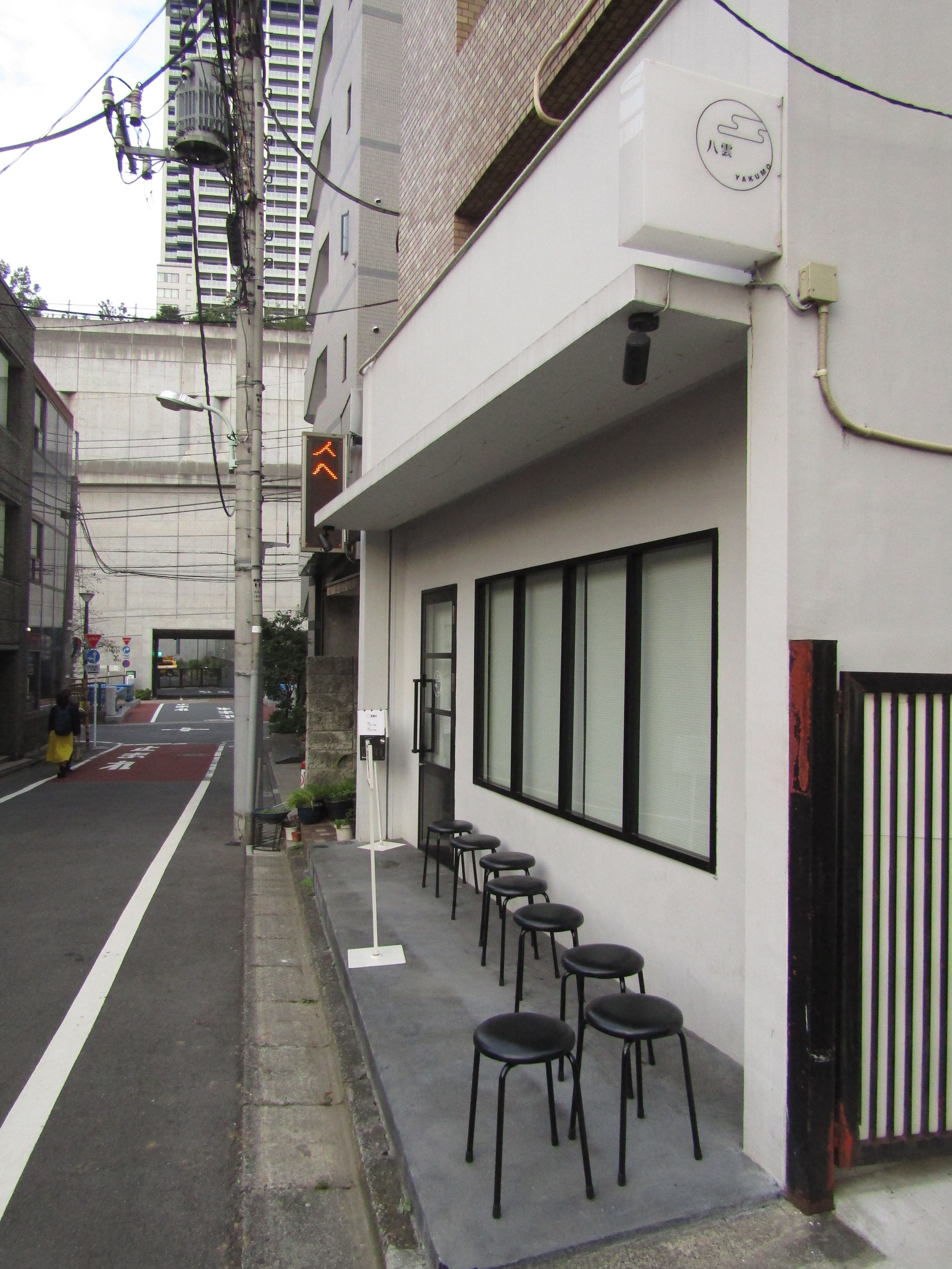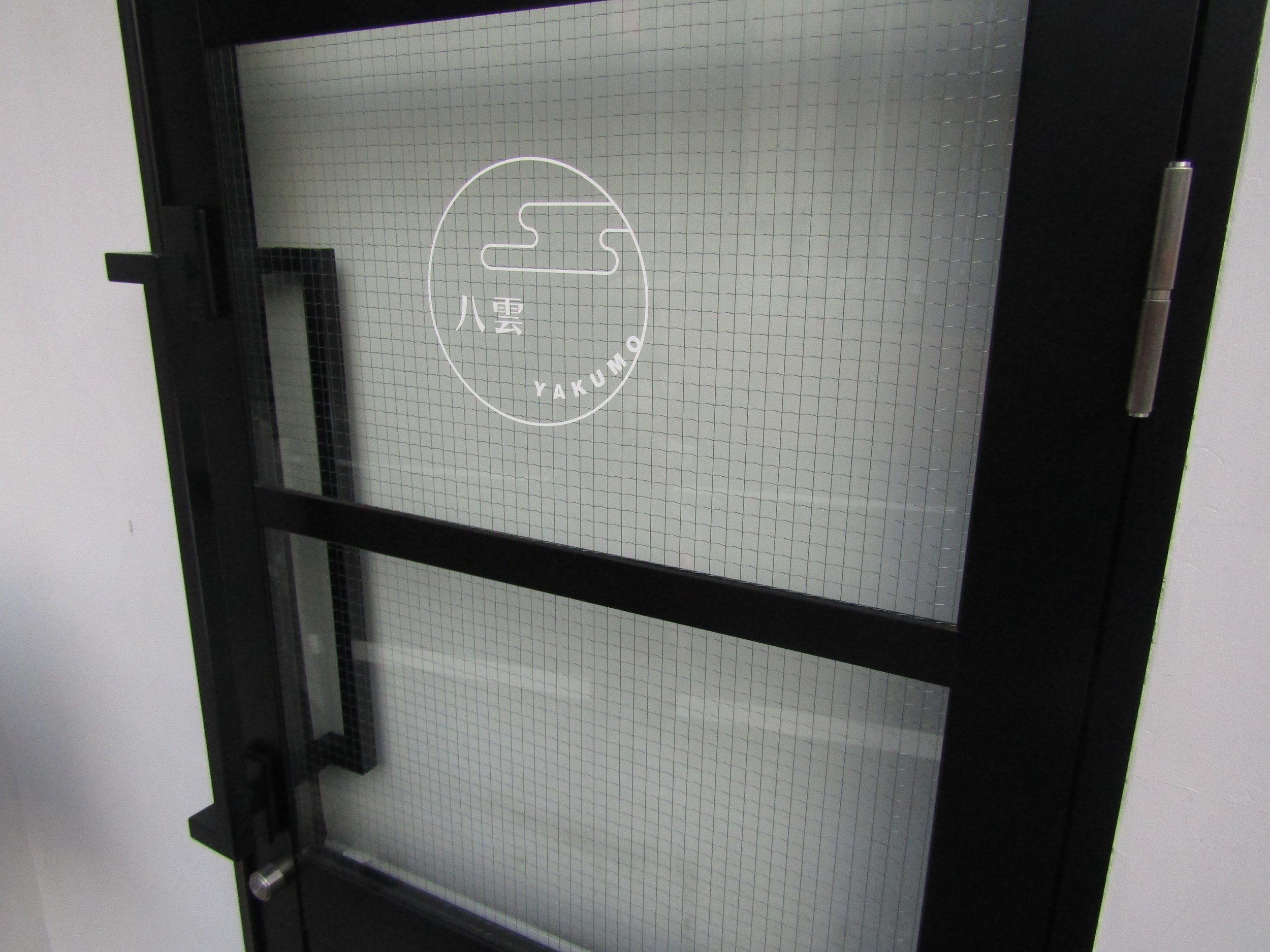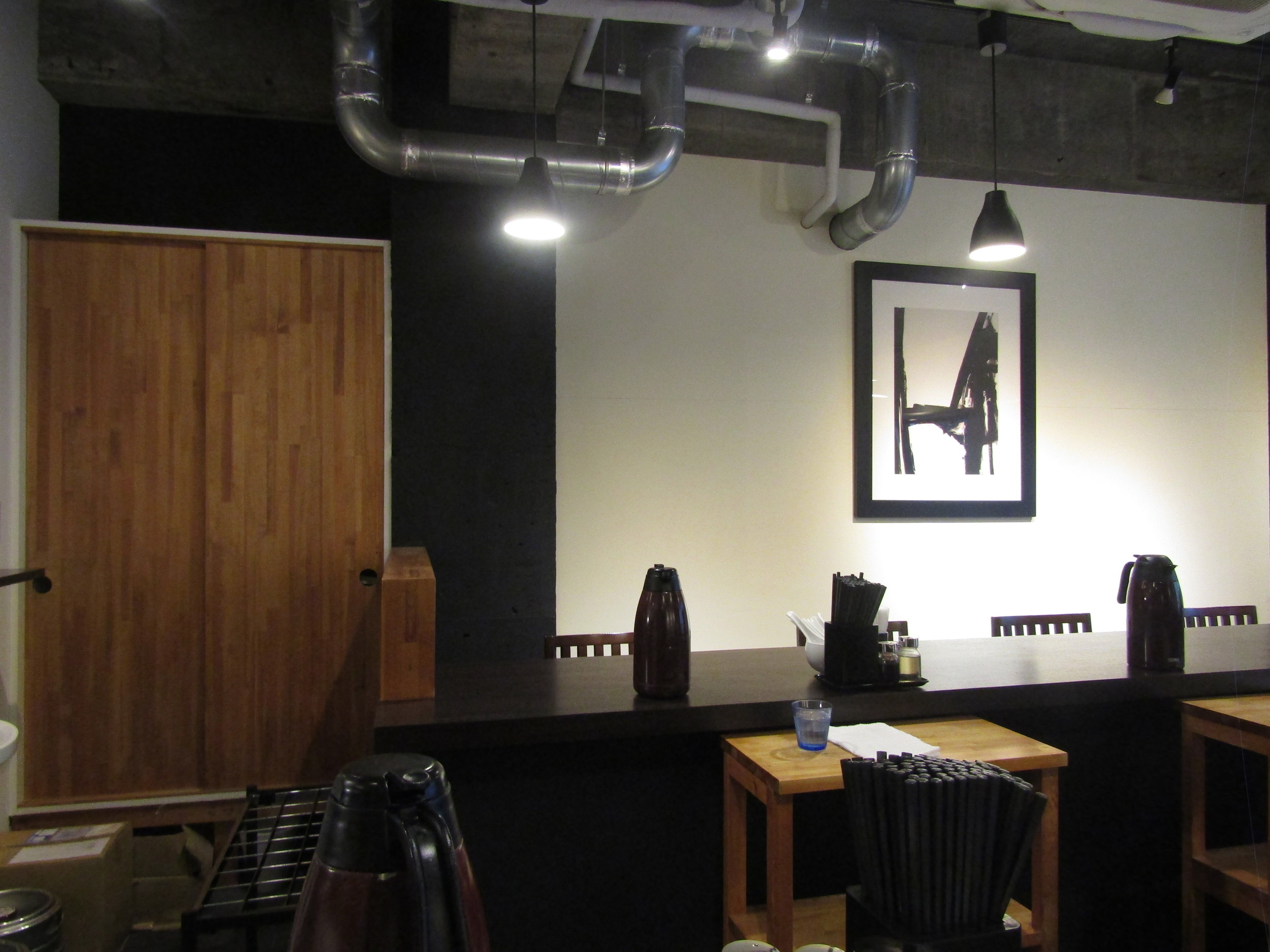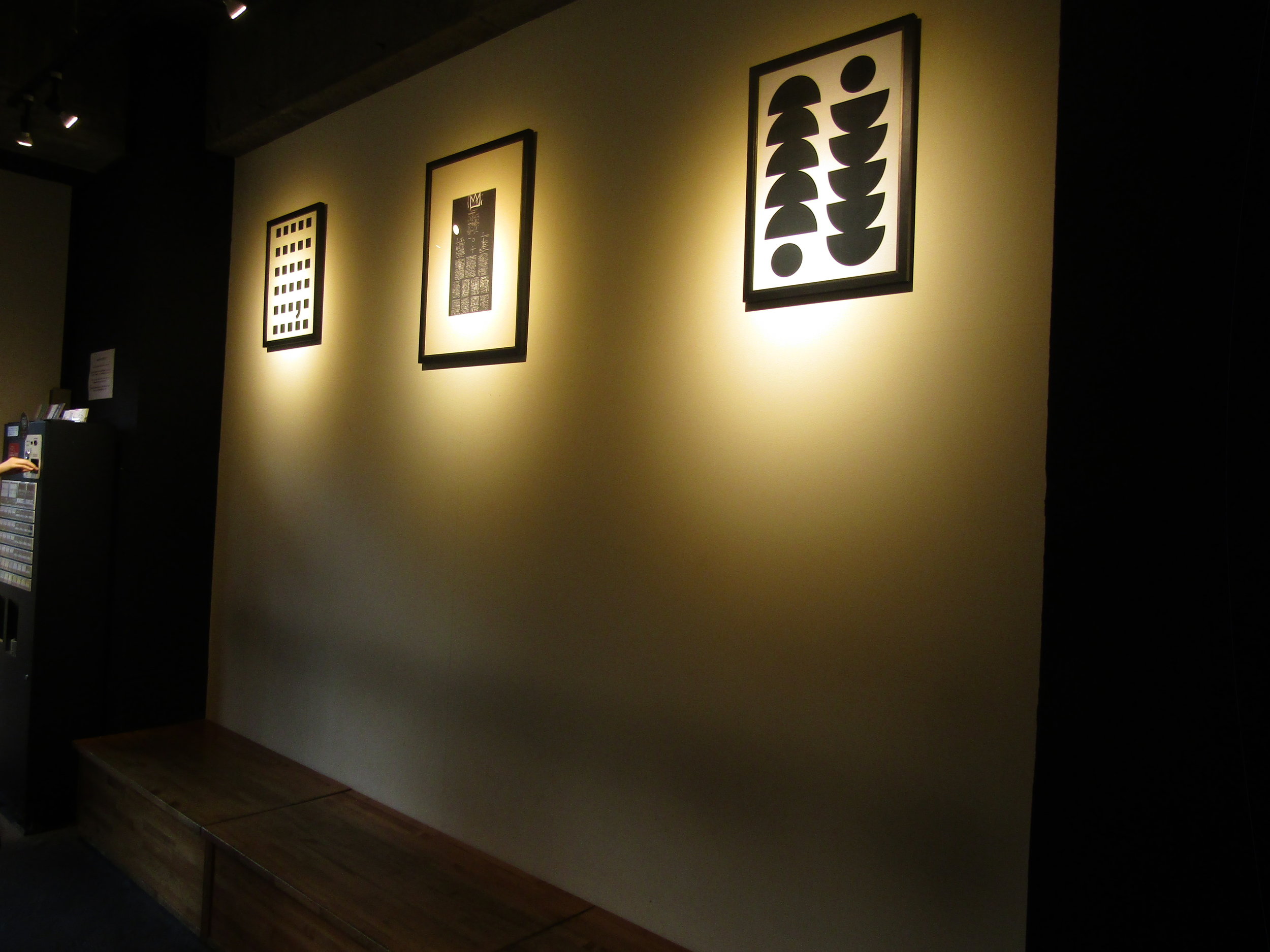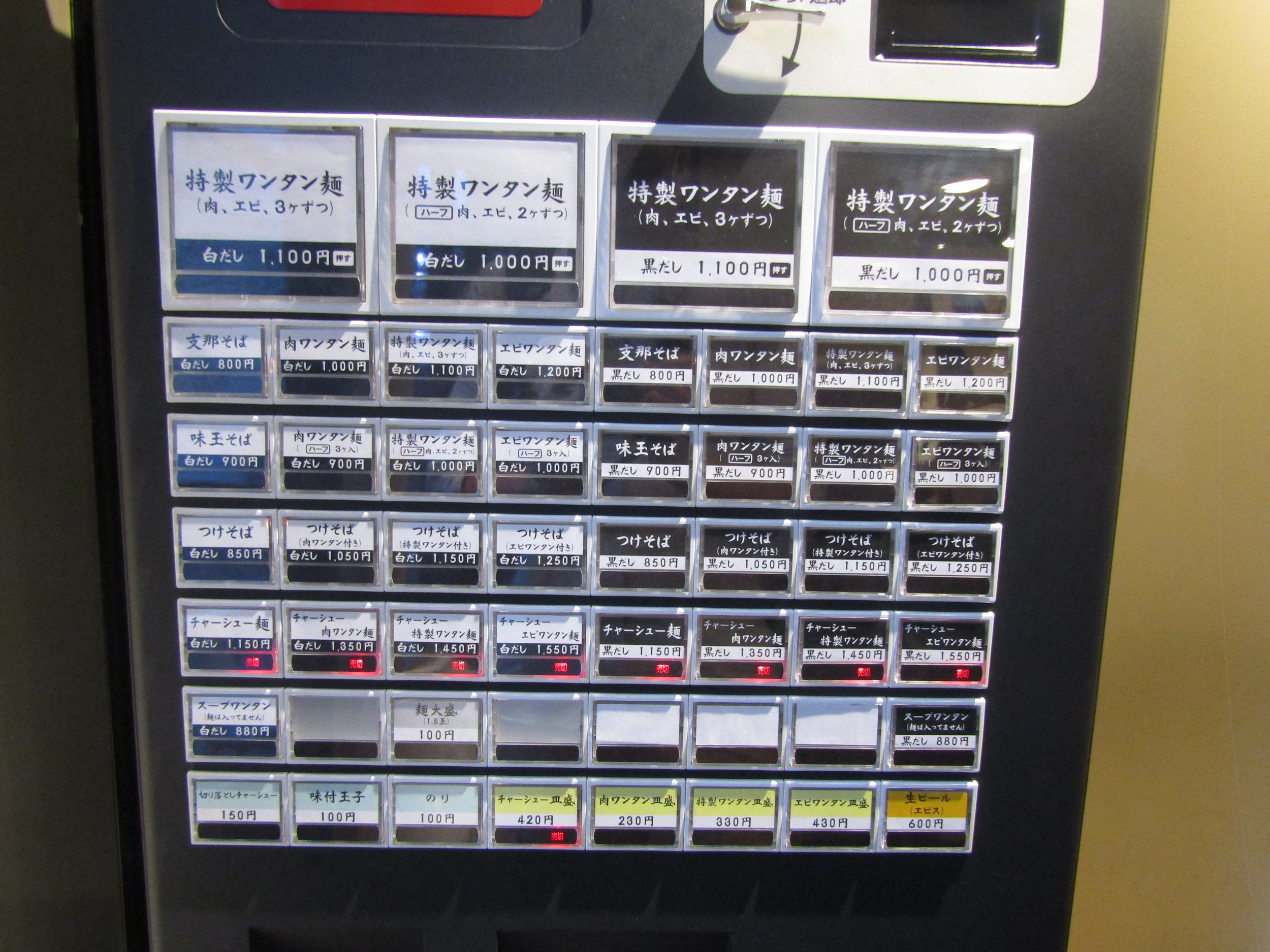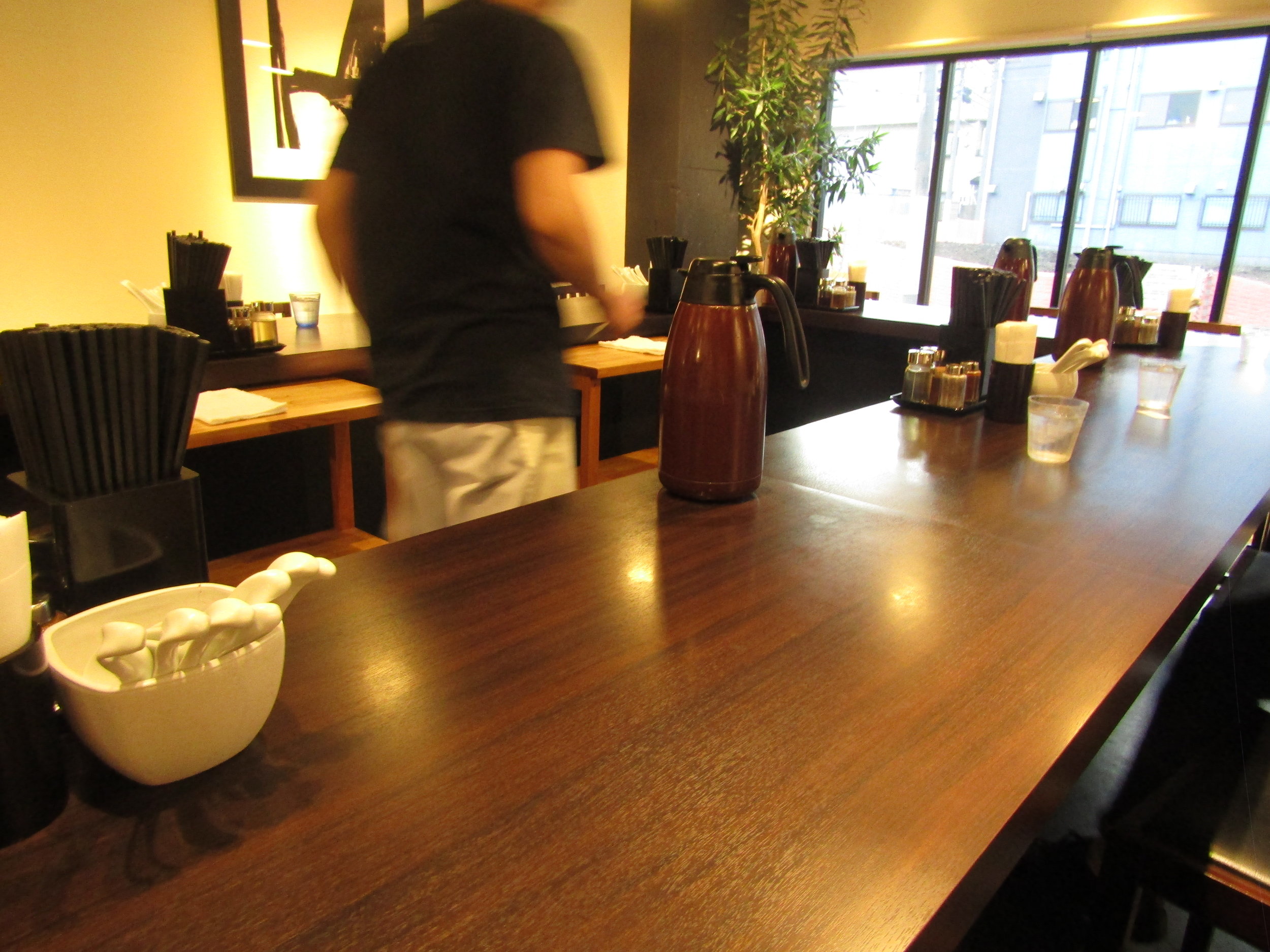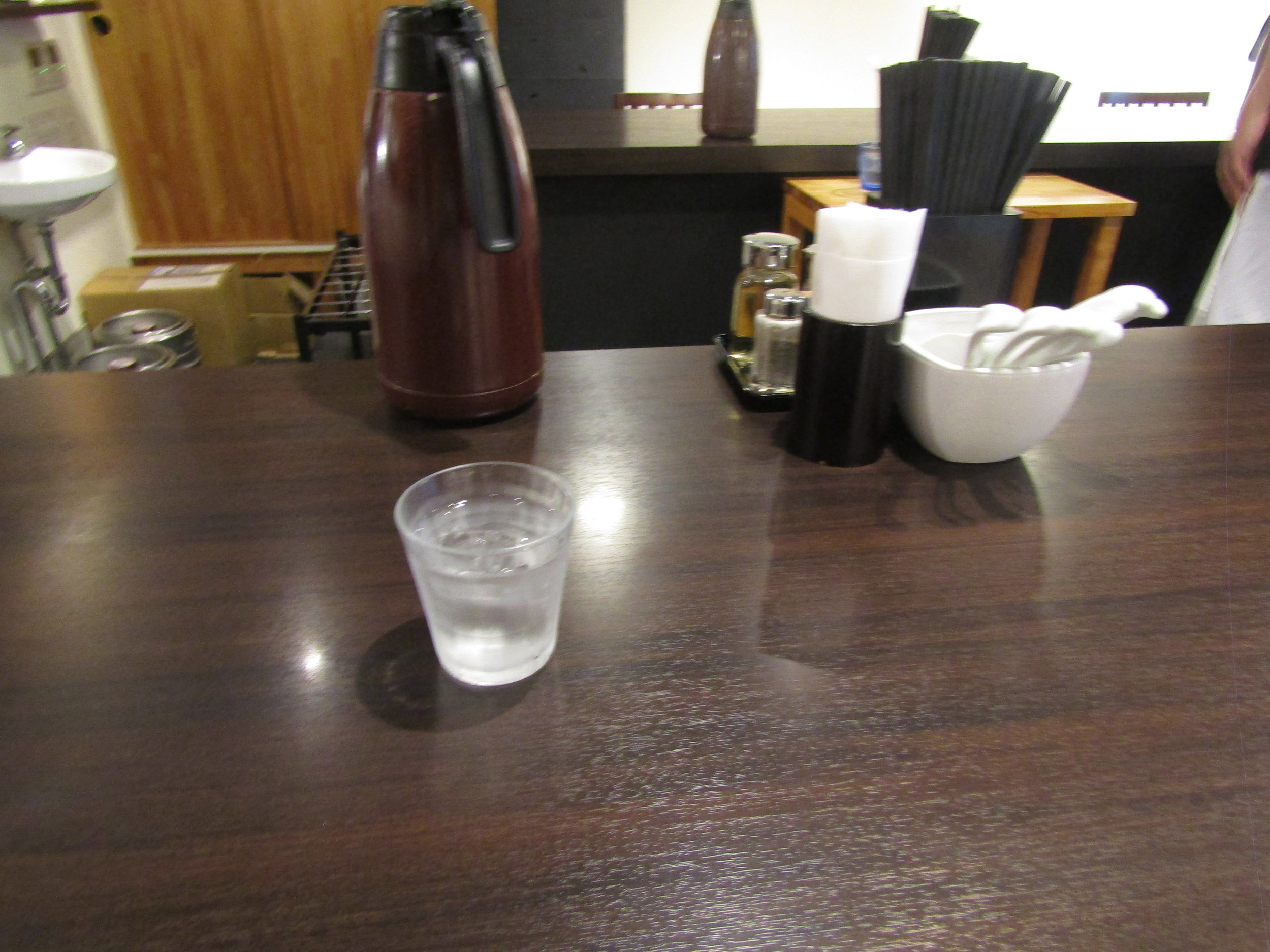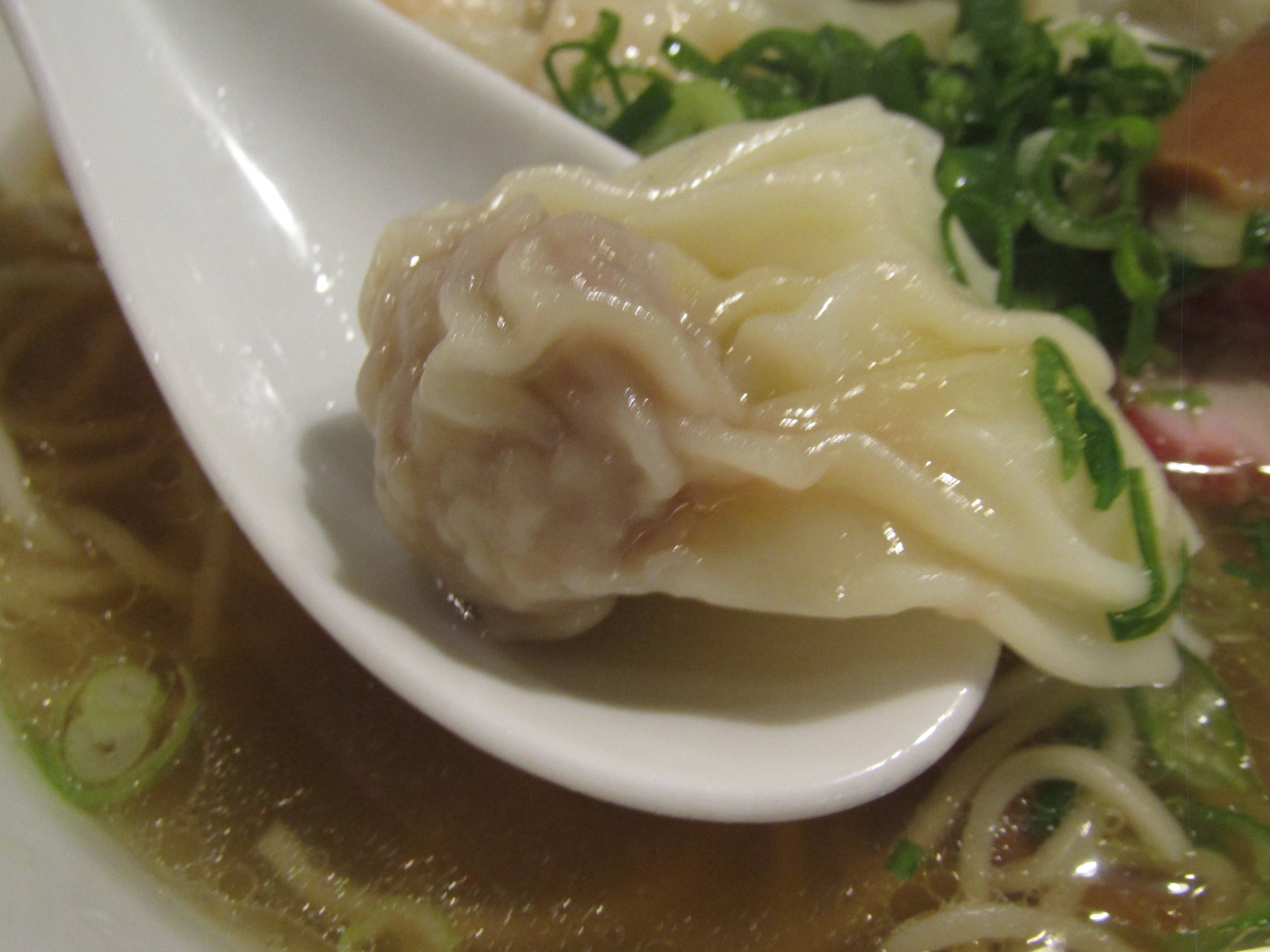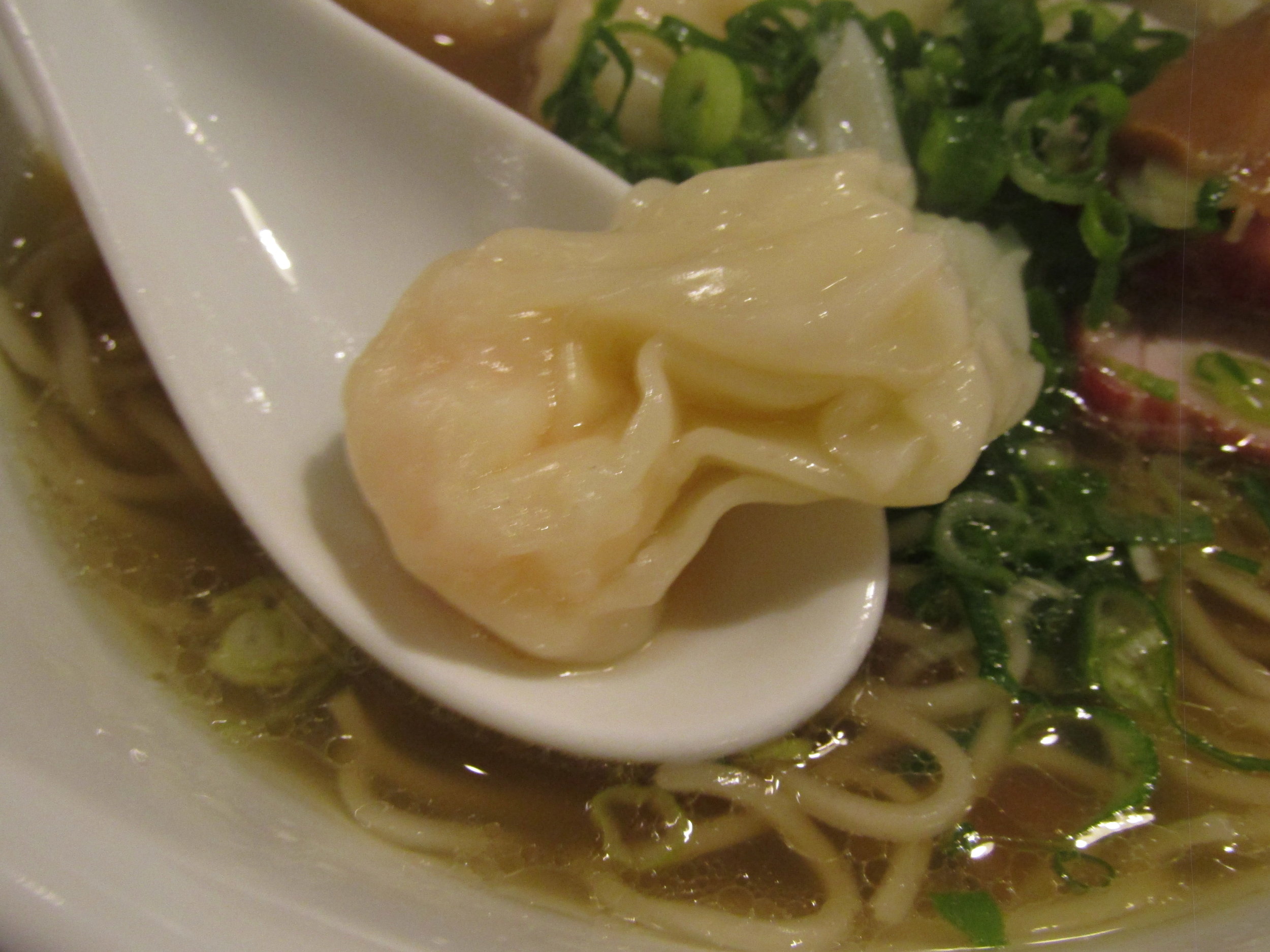Yakumo (八雲); Ramen Yin and Yang, Ikejiri Ohashi
Yakumo opened their doors for the first time in 1999 near Nakameguro station. Since then, hundreds of thousands of ramen bowls have been served and they have since relocated to this restaurant three minutes from Ikejiri Ohashi station. Upon reaching the restaurant, my immediate reaction was that I was lost. The exteriors reminded me more of an art gallery than a highly respect ramen shop. You’ll start to see a trend going with the design of the restaurant. Logo is highlighted with black and white contrast. The interiors are no different. Once you walk in you’re surrounded by a chic combination of modern black, white and oak wood interiors. Walls are spotlighted with black and white art pieces, subtly hinting at Yakumo’s style of ramen.
Two Shoyu ramen styles are served at Yakumo, a white broth base and a black broth base. Both are immensely popular, but I opted for the white, as it stood out as the most unique, since most ramen shops tend to serve a darker Shoyu blend. After choosing your soup style, you need to decide on their wontons. Options of meat dumplings, shrimp dumplings, or a mix of both are available. First timers are recommended to order the mix in order to get a feel for both types. Once your ticket is purchased, a server will direct you to your seat, collect your ticket, and serve you with a glass of water.
The ramen here is phenomenal to say the least. The white Shoyu soup base pairs incredibly well with their thin, round noodles. Broth is pulled from a variety of pork, chicken and Niboshi, but done so in a way that not one overpowers the other. The traditional Chinese style red roast pork is meaty, but has just enough fat to balance out the protein. Green onions help cut through some of the oiliness with a fresh crunch and the homemade bamboo shoots are perfectly blanched to give a soft, but chewy finish.
The wontons here are the main attraction. The minced pork filling are perfectly seasoned to not overpower the soup. Shrimp wontons are fresh, plump and bring out a nice seafood umami to the bowl. After biting in to their wontons, you’ll start to understand that the light soup is there to compliment the wontons as not to overpower the flavor of the fillings. Even the look of the two wontons are consistent with the black and white aesthetics of the restaurant. The pork filling gives off a darker, black overtone while the shrimp has a translucent white sheen.
If you’re looking for a unique fine dining experience, that combines both cuisine and interior design, and at a reasonable price, I highly recommend a visit. The black and white, yin and yang concept bleeds through in all aspects of this restaurant and the dedication of the staff will definitely have you leaving content.
Written by S. Mizuno
